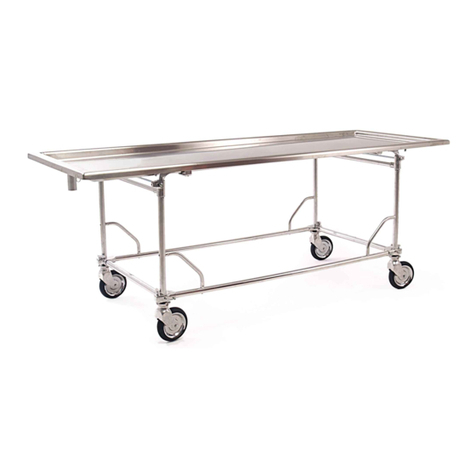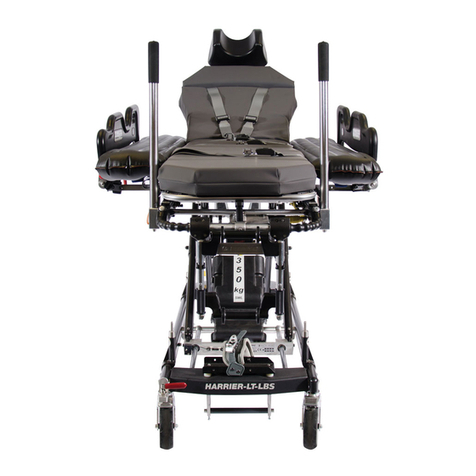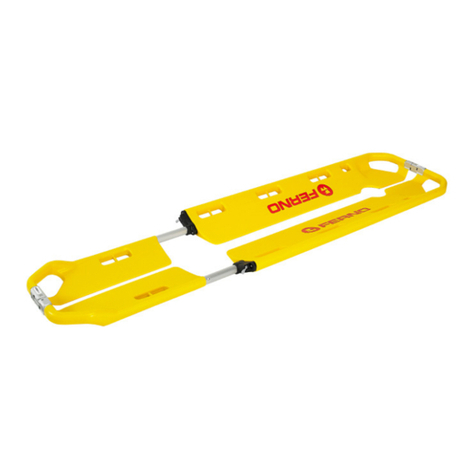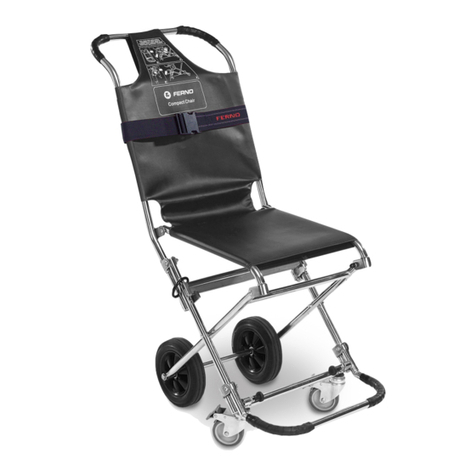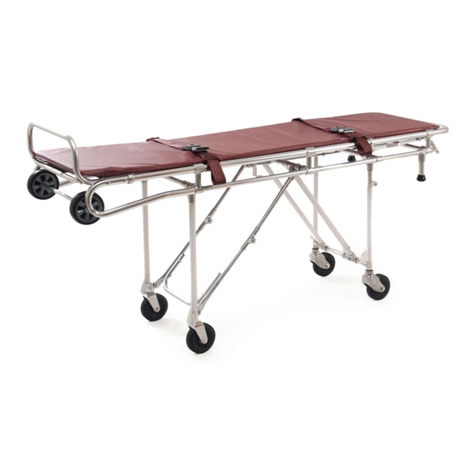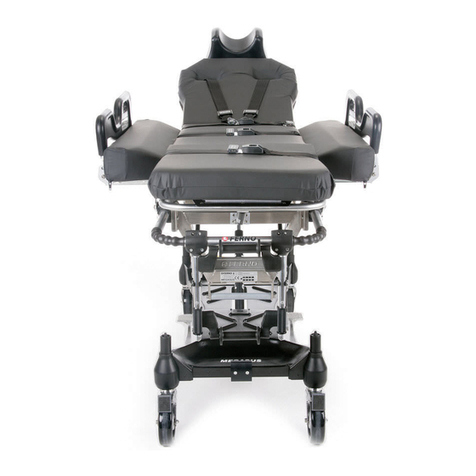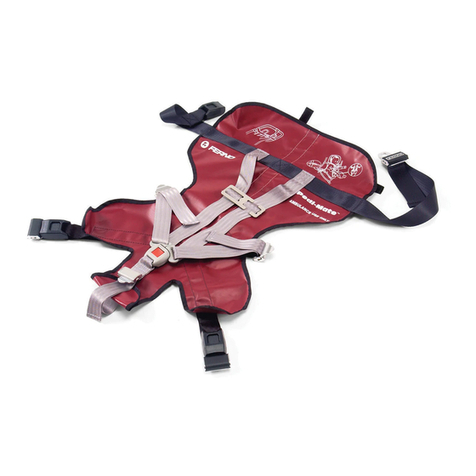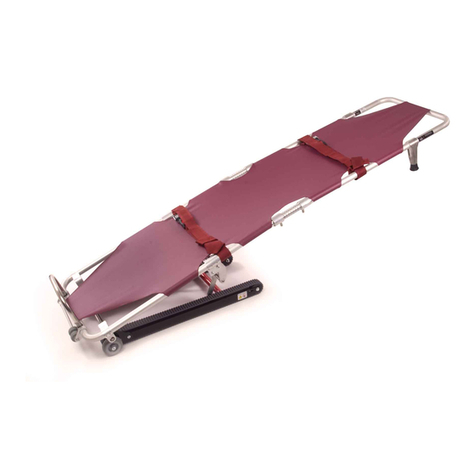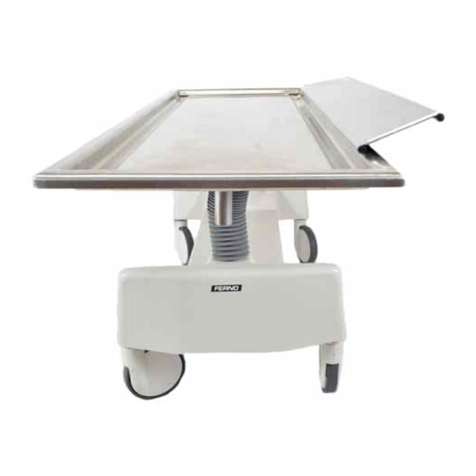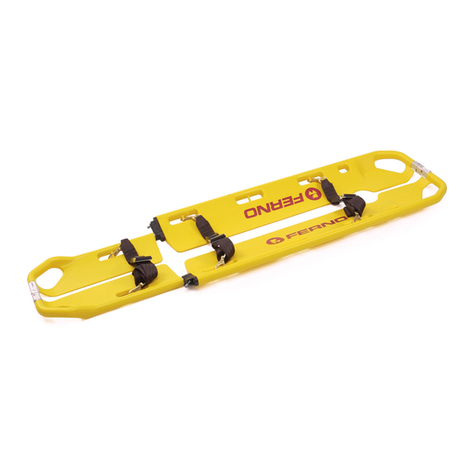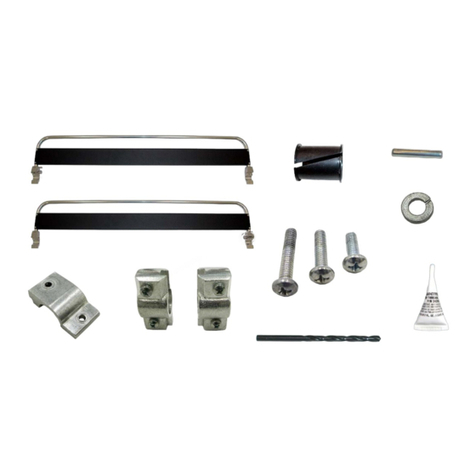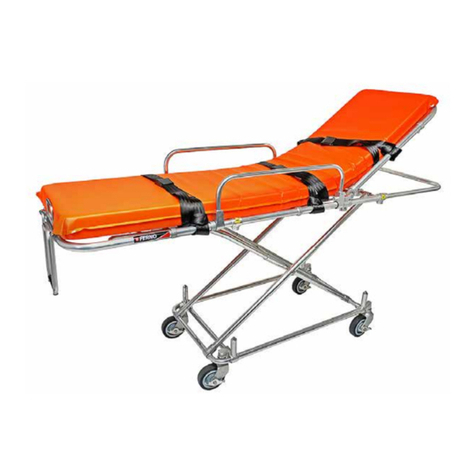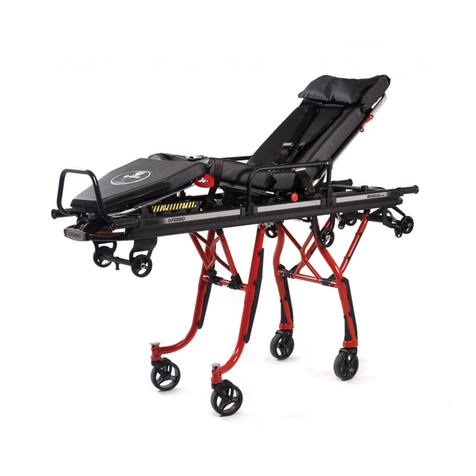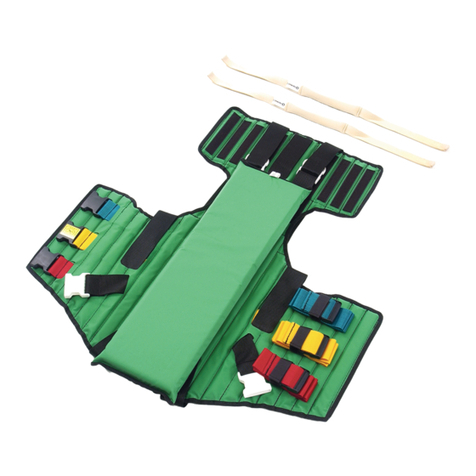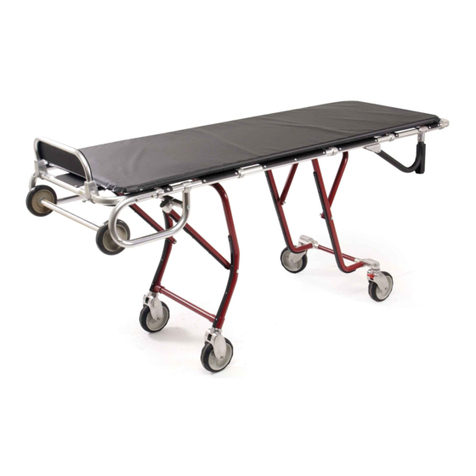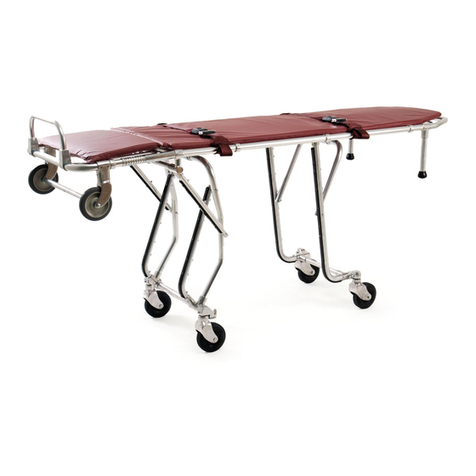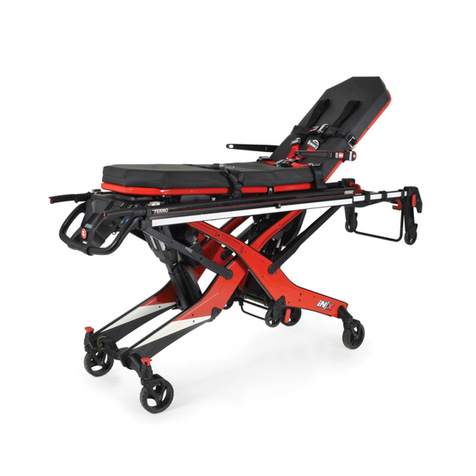
© Ferno-Washington, Inc. 234-3257-01 December, 2004 3
Ferno Model 50-E
TABLE OF CONTENTS
1 - Safety Information ................................................. 5, 6
1.1 Warning ................................................................ 5
1.2 Important .............................................................. 5
1.3 Bloodborne Disease Notice ................................. 5
1.4 Stretcher-Fastener Compatibility ......................... 5
1.5 Safety and Instruction Labels .............................. 6
2 - Operator Skills and Training.................................... 7
2.1 Skills .................................................................... 7
2.2 Training ................................................................ 7
2.3 Clearance, Height & Strength Considerations ..... 7
3 -About the Stretcher............................................... 8-10
3.1 Description ........................................................... 8
3.2 Vehicle Considerations ........................................ 8
3.3 General Specifications ......................................... 8
3.4 Component Specifications ................................... 9
3.5 Combined Stretcher Specifications...................... 9
3.6 Stretcher Positions ............................................. 10
4 - Model 50-E Undercarriage ................................ 11-14
4.1 Components ........................................................ 11
4.2 Touch Bars .......................................................... 11
4.3 Quick Fix Lock .................................................. 12
4.4 Position Control Handles ................................... 13
4.5 Foot-End Caster Wheel Locks ........................... 13
4.6 Head-End Caster Swivel Locks ......................... 14
5 - Model 155-E Stretcher Top ................................ 15-18
5.1 Components ....................................................... 15
5.2 Stretcher Top Positions ...................................... 15
5.3 Changing Stretcher-Top Positions ..................... 16
5.4 Gas-Assist Backrest ........................................... 16
5.5 Side Rails ........................................................... 17
5.6 Carrying Handles - Recumbent Position ........... 17
5.7 Carrying Handles - Chair Position..................... 18
6 - Stretcher Setup.................................................... 19-23
6.1 Preparing the Stretcher for Use ......................... 19
6.2 Guidelines for Using Restraints ......................... 19
6.3 Attaching One-Piece Restraints ......................... 20
6.4 Attaching Harness Components ................... 20, 21
6.5 Adjusting Restraint Length ................................ 22
6.6 Securing the Patient ..................................... 22, 23
6.7 Unfastening the Harness .................................... 23
6.8 Removing the Restraints .................................... 23
7 - Using the Stretcher ............................................. 24-33
7.1 Before Placing the Stretcher in Service ............. 24
7.2 General Guidelines for Use ............................... 24
7.3 Attaching Stretcher Top to Undercarriage ......... 25
7.4 Removing Stretcher Top from Undercarriage ... 26
7.5 Raising/Lowering the Stretcher
With Two Operators ........................................... 27
7.6 Raising/Lowering the Stretcher
With One Operator ............................................. 28
7.7 Transferring the Patient ..................................... 29
7.8 Rolling the Stretcher .......................................... 30
7.9 Increasing the Loading Height ........................... 30
7.10 Loading the Stretcher Into an Ambulance ......... 31
7.11 Unloading the Stretcher from an Ambulance .... 32
7.12 Using Additional Help ....................................... 33
8 - Maintenance ........................................................ 34-36
8.1 Maintenance Schedule ....................................... 34
8.2 Disinfecting and Cleaning the Restraints .......... 34
8.3 Disinfecting and Cleaning the Mattress ............. 34
8.4 Disinfecting and Cleaning the Stretcher ............ 35
8.5 Waxing the Stretcher .......................................... 35
8.6 Tracker™............................................................. 35
8.7 Inspecting the Stretcher ..................................... 35
8.8 Lubricating the Stretcher ................................... 36
9 - Accessories and Related Products .......................... 37
10 - Repair Parts and Service ...................................... 38
10.1 Parts and Service - Australia .............................. 38
10.2 Parts and Service - Worldwide .......................... 38
11 - Limited Warranty .................................................. 39
12 - Ferno Customer Relations .................................... 39
Training Record............................................................. 40
Maintenance Record ..................................................... 41
PageSection PageSection
